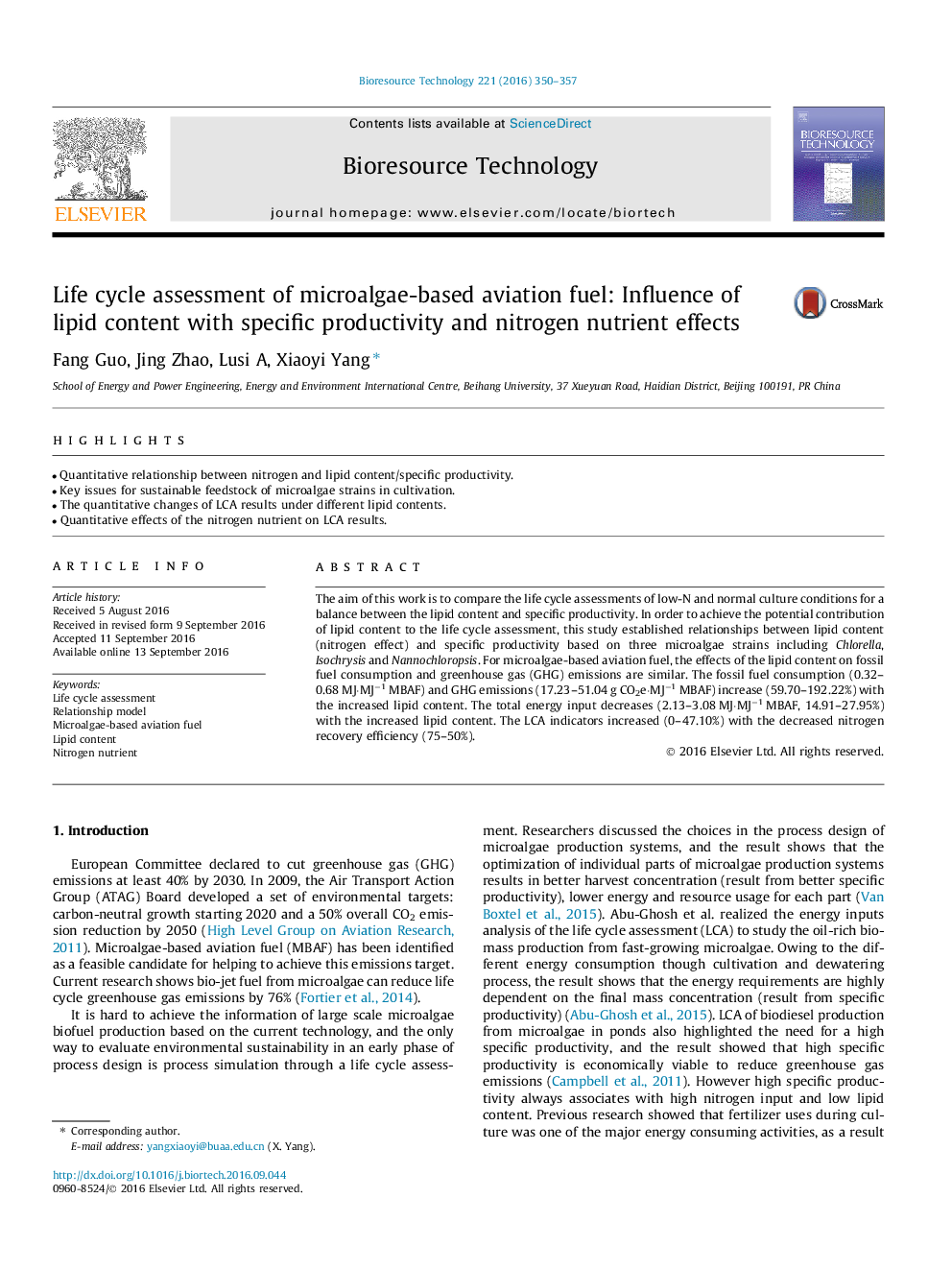| Article ID | Journal | Published Year | Pages | File Type |
|---|---|---|---|---|
| 4998062 | Bioresource Technology | 2016 | 8 Pages |
â¢Quantitative relationship between nitrogen and lipid content/specific productivity.â¢Key issues for sustainable feedstock of microalgae strains in cultivation.â¢The quantitative changes of LCA results under different lipid contents.â¢Quantitative effects of the nitrogen nutrient on LCA results.
The aim of this work is to compare the life cycle assessments of low-N and normal culture conditions for a balance between the lipid content and specific productivity. In order to achieve the potential contribution of lipid content to the life cycle assessment, this study established relationships between lipid content (nitrogen effect) and specific productivity based on three microalgae strains including Chlorella, Isochrysis and Nannochloropsis. For microalgae-based aviation fuel, the effects of the lipid content on fossil fuel consumption and greenhouse gas (GHG) emissions are similar. The fossil fuel consumption (0.32-0.68 MJ·MJâ1 MBAF) and GHG emissions (17.23-51.04 g CO2e·MJâ1 MBAF) increase (59.70-192.22%) with the increased lipid content. The total energy input decreases (2.13-3.08 MJ·MJâ1 MBAF, 14.91-27.95%) with the increased lipid content. The LCA indicators increased (0-47.10%) with the decreased nitrogen recovery efficiency (75-50%).
